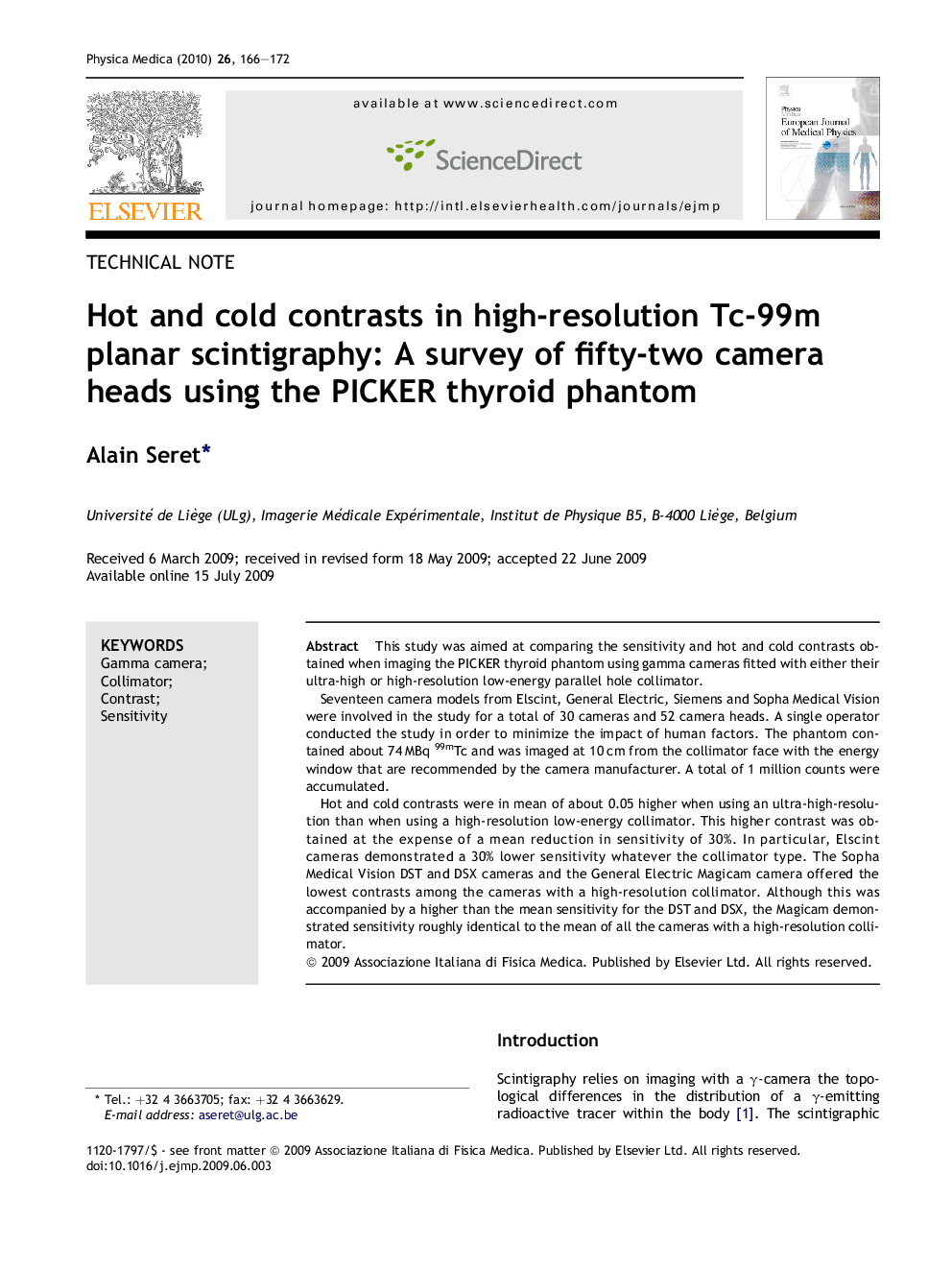| Article ID | Journal | Published Year | Pages | File Type |
|---|---|---|---|---|
| 1884025 | Physica Medica | 2010 | 7 Pages |
This study was aimed at comparing the sensitivity and hot and cold contrasts obtained when imaging the PICKER thyroid phantom using gamma cameras fitted with either their ultra-high or high-resolution low-energy parallel hole collimator.Seventeen camera models from Elscint, General Electric, Siemens and Sopha Medical Vision were involved in the study for a total of 30 cameras and 52 camera heads. A single operator conducted the study in order to minimize the impact of human factors. The phantom contained about 74 MBq 99mTc and was imaged at 10 cm from the collimator face with the energy window that are recommended by the camera manufacturer. A total of 1 million counts were accumulated.Hot and cold contrasts were in mean of about 0.05 higher when using an ultra-high-resolution than when using a high-resolution low-energy collimator. This higher contrast was obtained at the expense of a mean reduction in sensitivity of 30%. In particular, Elscint cameras demonstrated a 30% lower sensitivity whatever the collimator type. The Sopha Medical Vision DST and DSX cameras and the General Electric Magicam camera offered the lowest contrasts among the cameras with a high-resolution collimator. Although this was accompanied by a higher than the mean sensitivity for the DST and DSX, the Magicam demonstrated sensitivity roughly identical to the mean of all the cameras with a high-resolution collimator.
